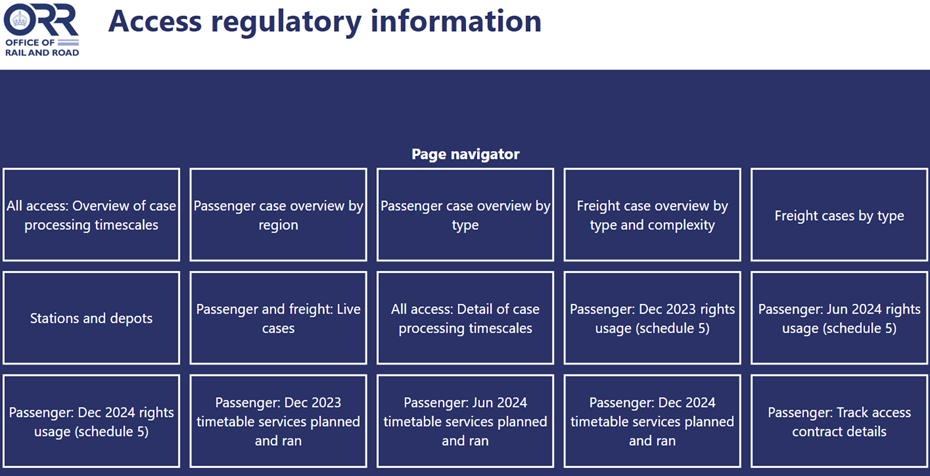This publication provides management information on access rights planning and use. It provides a holistic view of passenger track access rights and can display how these are being used across the network including:
- track access applications made by freight and passenger operators of rail services in Great Britain
- the submission and approval timescales for passenger track applications against the timetable production milestones of the Network Code
- information on the use of access rights by passenger operators
The latest data includes applications up to the Principal Timetable Change which began operation on 15 December 2024. Download the factsheet for more details.
The factsheet is accompanied by a Power BI dashboard and data tables available below.
View the glossary for more information on dashboard terminology.
View the dashboard, hosted on Power BI:

Key Messages
- December 2024 saw a large number of late applications which were created by administrative processes. Some of these supported improved services for passengers, whilst others were to continue existing services. ORR ensured that all supported applications submitted ahead of the timetable change were approved in time.
- December 2024 represented a significantly higher number of access applications when compared with the previous four timetable changes. Passenger train operators made 40 applications for additional or different capacity use (track access) for the timetable change date on 15 December 2024 which required ORR’s specific approval and 7 applications which required ORR’s general approval.
- 32 of these applications were submitted after the industry deadline for publishing the timetable and when advance ticket booking opens (‘D12’ – 12 weeks before the timetable change). This introduces a potential risk for operators (and passengers) of timetabled services not having the right to use the network. This represented a worsening of timeliness when compared with the May 2024 timetable change, where 10 out of 27 similar applications were approved after the industry timetable was published. In part, this was because Network Rail was not ready to offer long term access to all operators who had applied for it as part of the competing applications process in May 2024.
- The timetable monitoring production data published by ORR is a useful comparison for looking at when operators had access rights in place against when Network Rail offered the timetable to industry at D26 (26 weeks before the timetable change). This shows that a high number of operators did not have long or short-term access rights in place by D26.
- As of 15 December 2024, passenger operators planned to use 87 per cent of the total contracted rights (capacity) allocated.
- Up to 25 March 2025 passenger operators actually ran train services which used 83 per cent of the total capacity allocated in terms of rights.
- Use of rights for most operators is impacted by planned engineering access. However, industrial action and short notice engineering work as well as decisions by operators and funders on when services run impact the use of rights.
- In some instances, operators were not able to explain differences between the rights held and the services planned or ran. It is important for industry to understand its rights in the timetable better to ensure capacity is used most effectively.
About ORR's role
ORR approves (or directs) the granting of access rights and monitors the timing of Network Rail and train operators’ applications. Comparing when an application is made against the Network Code timescales is important because:
- passengers can have greater confidence that timetabled services will run because they are supported by a contract
- an operator has a contractual priority giving greater certainty its related services will run as planned in the timetable
- the greater certainty supports better operational planning for trains and crew

